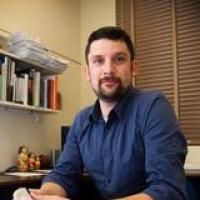Quenching factor measurements of neon nuclei in neon gas
Abstract
The NEWS-G collaboration uses Spherical Proportional Counters (SPCs) to search for weakly interacting massive particles (WIMPs). In this paper, we report the first measurements of the nuclear quenching factor in neon gas at \SI{2}{bar} using an SPC deployed in a neutron beam at the TUNL facility. The energy-dependence of the nuclear quenching factor is modelled using a simple power law: $\alpha$E${nr}^{\beta}$; we determine its parameters by simultaneously fitting the data collected with the detector over a range of energies. We measured the following parameters in Ne:CH${4}$ at \SI{2}{bar}: $\alpha$ = 0.2801 $\pm$ 0.0050 (fit) $\pm$ 0.0045 (sys) and $\beta$ = 0.0867 $\pm$ 0.020 (fit) $\pm$ 0.006(sys). Our measurements do not agree with expected values from SRIM or Lindhard theory. We demonstrated the feasibility of performing quenching factor measurements at sub-keV energies in gases using SPCs and a neutron beam.
Type
Department
Description
Provenance
Subjects
Citation
Permalink
Collections
Scholars@Duke

Phillip S. Barbeau
Professor Barbeau’s research interests are predominantly in the fields of neutrino and astroparticle physics. His efforts are focused on (but not limited to) three major areas of research: studying the physics of coherent neutrino-nucleus scattering; novel searches for the dark matter in our universe; and searches for zero neutrino double beta decay. The unifying aspect of the work is the common need for new and creative detector development in order to solve some of the “hard” problems in low-background rare-event detection.
Unless otherwise indicated, scholarly articles published by Duke faculty members are made available here with a CC-BY-NC (Creative Commons Attribution Non-Commercial) license, as enabled by the Duke Open Access Policy. If you wish to use the materials in ways not already permitted under CC-BY-NC, please consult the copyright owner. Other materials are made available here through the author’s grant of a non-exclusive license to make their work openly accessible.
